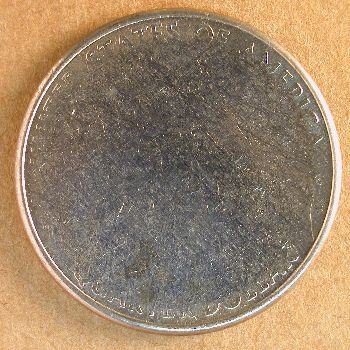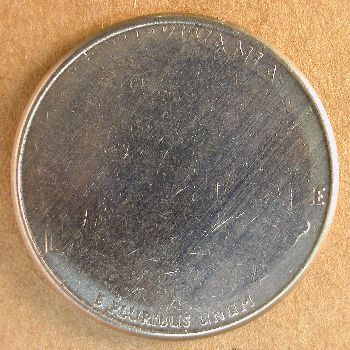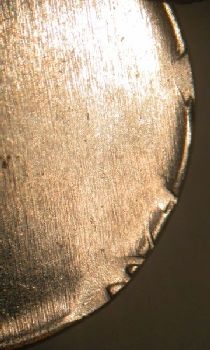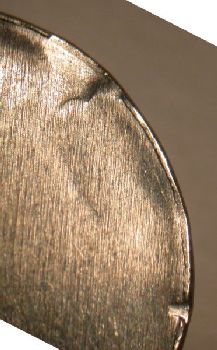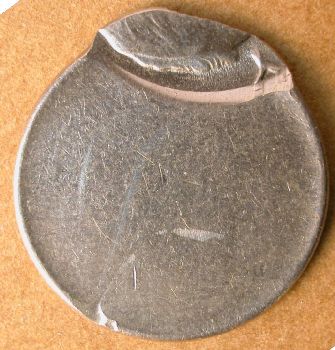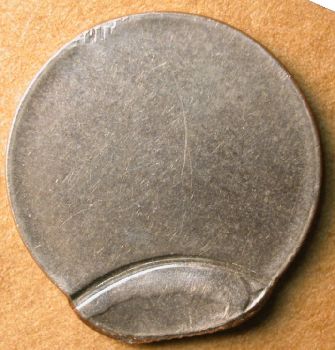Part VI. Striking Errors:
Weak Strikes:
Rim-Restricted First Strike
Definition: A weak strike caused by insufficient die approximation in which the dies are so far apart at their closest approach that they only manage to contact the planchet’s proto-rim. This error can appear on centered planchets and off-center planchets.
The dies that struck this 1999 Pennsylvania quarter were so far apart that they only managed to strike the planchet’s proto-rim. This created a halo of design on both faces while leaving the center of the coin unmarked. Since the inward slope of a strongly developed proto-rim can extend further into the planchet than the design rim, it is possible to get a rim-restricted first strike on a perfectly centered planchet.
This dime was struck approximately 70% off center by excessively spaced dies. There is a faint trace of Roosevelt’s throat in the field. Otherwise, obverse design elements are restricted to the proto-rim. These include his lip, chin, and back of his neck.. Reverse design elements appear exclusively on the proto-rim and include portions of the flame and several olive leaves. Interestingly, the planchet is pristine, having avoided all tumbling marks that are ordinarily picked up in the annealing drum, chemical rinse bath, riddlers, and other sources of planchet-to-planchet contact.
This dime received two off-center strikes. It’s not clear whether it is a saddle (tandem) strike. The off-center strike that is die-struck on both faces is very weak. In the obverse field, there is a faint trace of Roosevelt’s forehead and crown. A more strongly struck impression of his brow appears on the proto-rim. On the reverse, the first three letters of PLURIBUS appears on the proto-rim, with no design elements visible in the field. The other off-center strike is well-struck, in part because a previously-struck dime was taking up any excess space that may have existed (generating a “mirror” brockage of the obverse design on the reverse face).
